Erste Lage Sneak Preview 2009
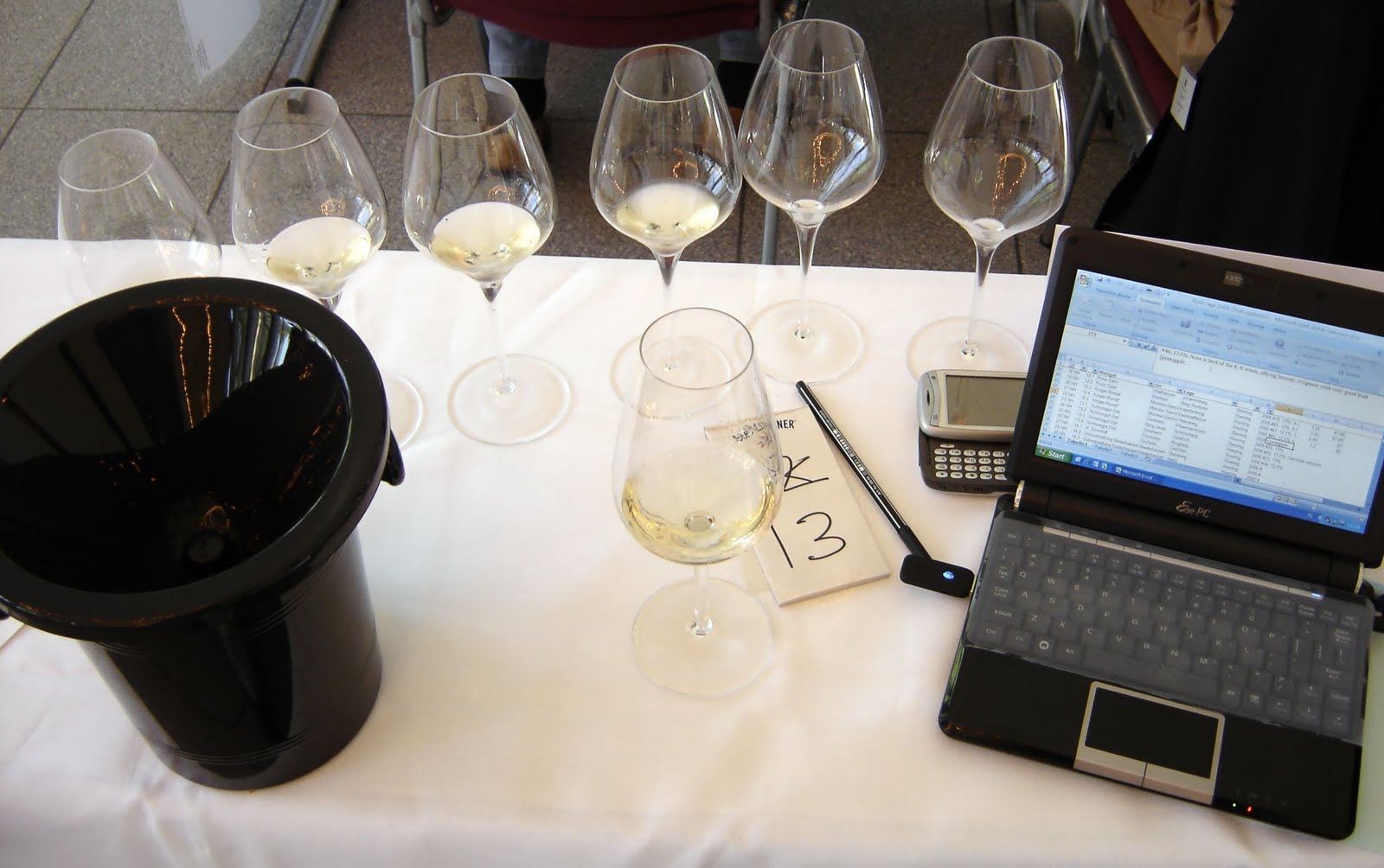

It was the sort of event that takes weeks if not months of planning. Browsing internet wine shops, enquiring for offers, searching for tasting notes. Pondering a dinner menu, thinking of food & wine matches. Planning a proper ‘trajectory’ for the event. Alternative scenarios, ‘B’ plans (old bottles are often faulty). In the end I’m happy with how smoothly it went. With some helping hands in the kitchen I managed to serve 12 courses with matching wines to a party of 10, steering clear of major disasters. And it all took short of 9 hours.
I’ll spare you a description of the food – reading about bisques, soufflés and chocolates on a blog always sounds a little over-indulgent and of little usefulness – and share a few tasting notes.
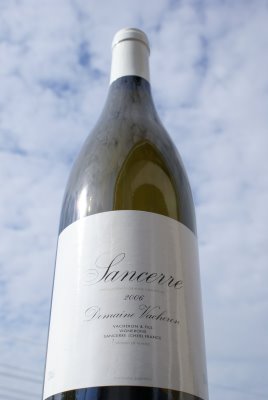
Domaine Vacheron Sancerre 2006
This wasn’t served to guests – it was the cook’s aperitif. It’s quite ripe for a Loire Sauvignon, with subdued acidity but an obvious mineral character. A classy wine, though not a monster of expression. But I prefer Vacheron’s clean style in a less ripe vintage.
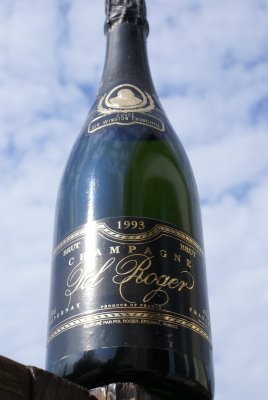
Pol Roger Cuvée Sir Winston Churchill 1993
A gift from the maison that I’ve cellared since 2003. 1993 was a structured vintage, but never great and now largely overshadowed by the likes of 1996. Yet top cuvées from 1993 are now in top shape – this Churchill surely is. Outstanding from the first to the last drop (not that it lasted long). Fresh, unevolved, poised and mineral. There is some underlying sweetness of dosage but also good vinosity and juiciness. The flavour is very fused, and it’s difficult to give a detailed analysis: perhaps a bit of raspberry atop the more usual notes of brioche and vanilla. Still very young – this can go on for another decade or two. Brilliant wine.
We’ve also had some other champagnes including a crisp, engaging Brut Réserve Rosée (two years since dégorgement) from Philipponnat, whom I find very much on the upswing of late.
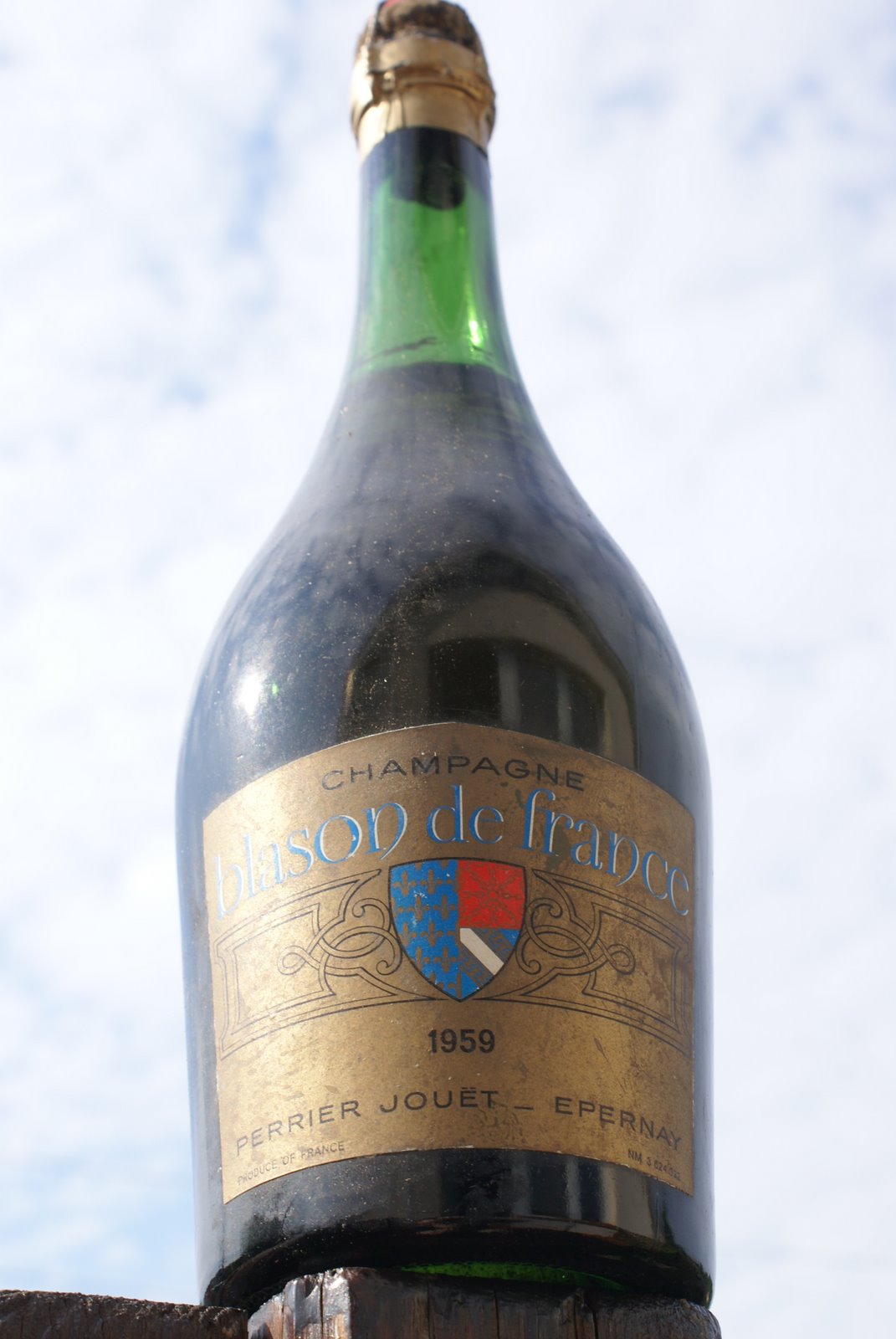
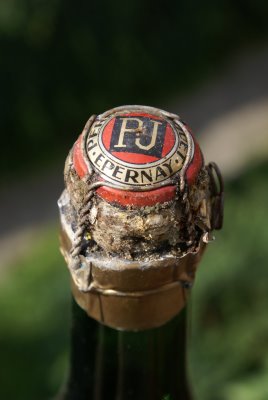
Perrier-Jouët Blason de France 1959
I got this bottle from the Barolo–Brunello shop in Germany. The level was a little low and there was some heavy sediment so I knew the risk (and the very amiable owner Stefan Töpler made it clear). Such old bottles are always a hazard. Here, the cork was completely loose and the wine awfully oxidised with no bubbles. Oh well.
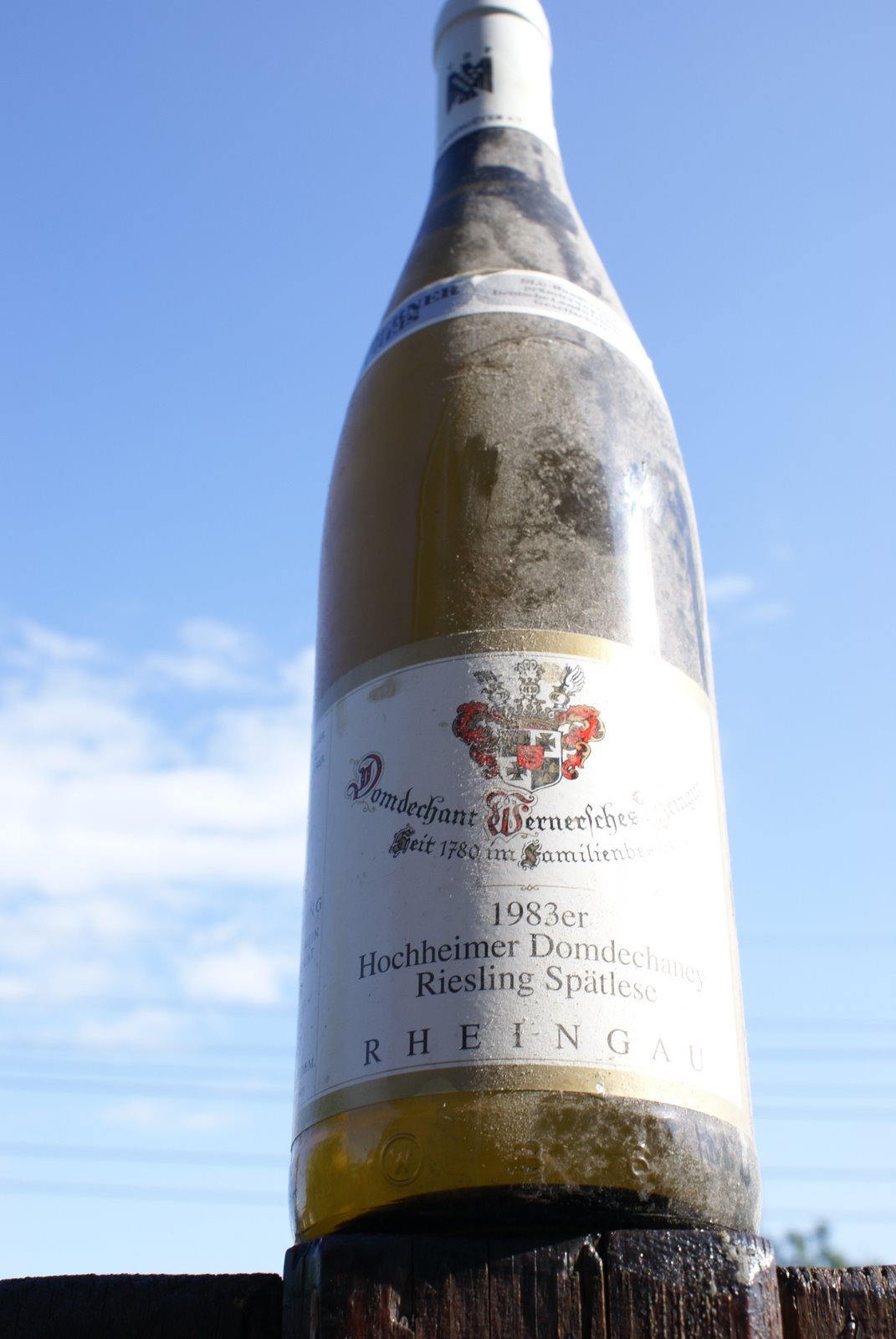
Domdechant Hochheimer Domdechaney
Riesling Spätlese 1983
I visited this estate on the Main near Frankfurt in April 2005, and we’ve had a great conversation with owner Dr. Franz Werner Michel. At lunch, this 1983 was served, and enhanced by Michel’s engaging stories, it tasted as good as any mature Riesling ever did. Upon saying our goodbyes we were offered a bottle each of the same wine. As usually with precious wines, it was waiting in my cellar for an ‘occasion’. A very mature wine, with some storage problems perhaps (cork was completely soaked) showing in a musty, unclean nose, though underneath there is some good Firne [aged Riesling] character. Sweeter than expected on the palate, but there is also a greenness to the sweetness and acidity. This bottle showed a bit unremarkable but was surely short of perfectly stored.
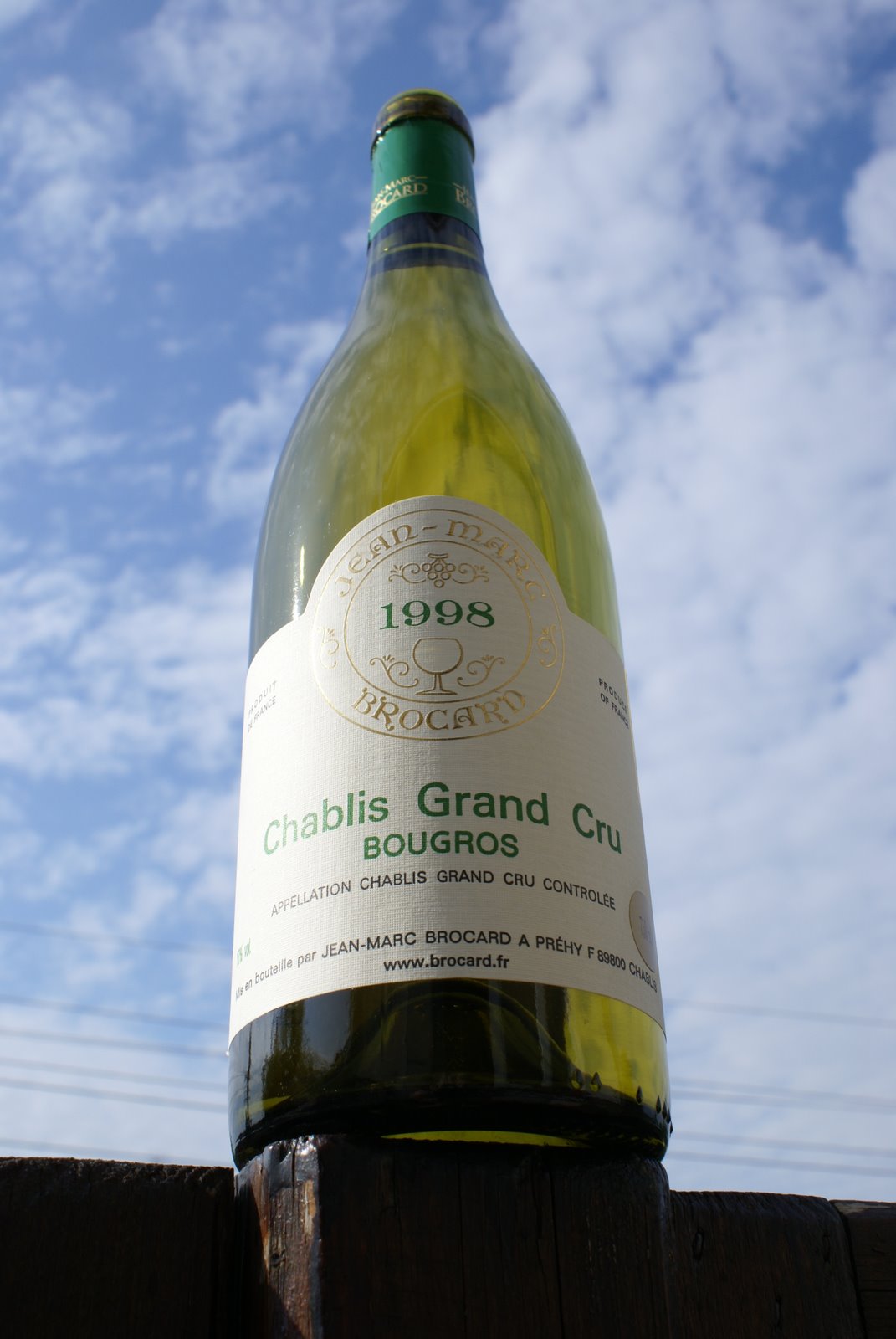
Jean-Marc Brocard
Chablis Grand Cru Bougros 1998
As expected from the youngest wine of the afternoon, no problems whatsoever with this bottle. It was part of a mixed case of older vintages I bought at the estate last October. It’s only 35€ – a bargain for a grand cru of any age, let alone a decade old. When tasted in Chablis, it showed very good saline minerality but also quite some oak sweetness. Yet served with food (a saffron-flavoured poule à la crème), the oak disappeared almost completely. It was a lesson in real-life food & wine matching. Crisp, linear, mineral, statuesque almost, showing power and reserve. An excellent wine. Dregs retasted the day after were less exciting, less poised, built around the butter and vanilla I remembered from October. Not bad at all on a hedonistic level though.
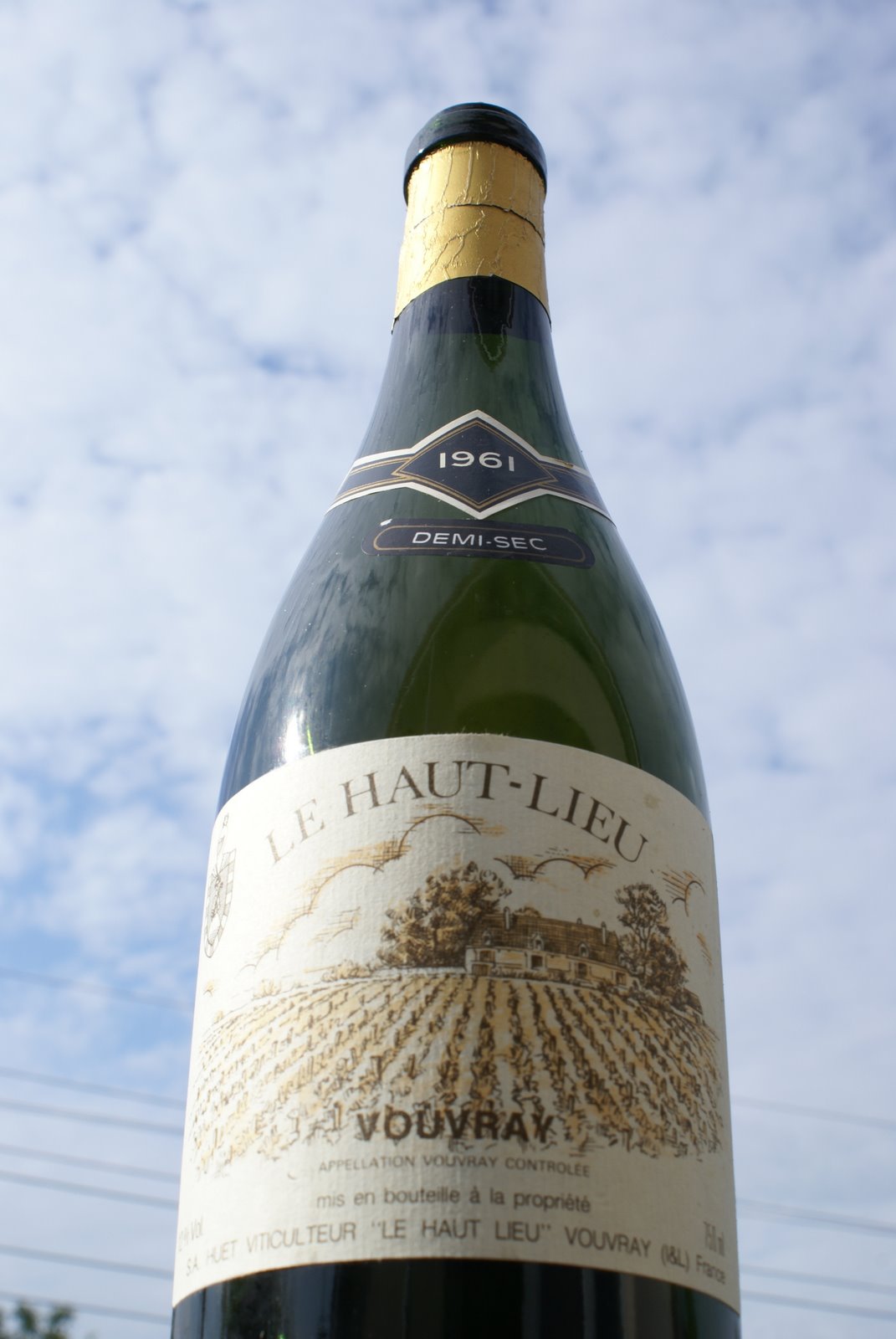
Domaine Huët
Vouvray Le Haut-Lieu demi-sec 1961
I got this bottle a couple of years ago from the excellent Bacchus Vinothek in Germany. The price seemed low (50€), and these Vouvrays are known for their ageing potential so I took the plunge. Looking at the intact label and the immaculate cork it’s clear this bottle was at best recorked (and likely refilled?), and at worst it’s not a 1961 at all. It’s an excellent aged Vouvray but it really tastes too young and dynamic to be 48 years old. The colour is also a bit suspect, with green tinges (unlikely in a wine of this age?) to a medium golden whole:
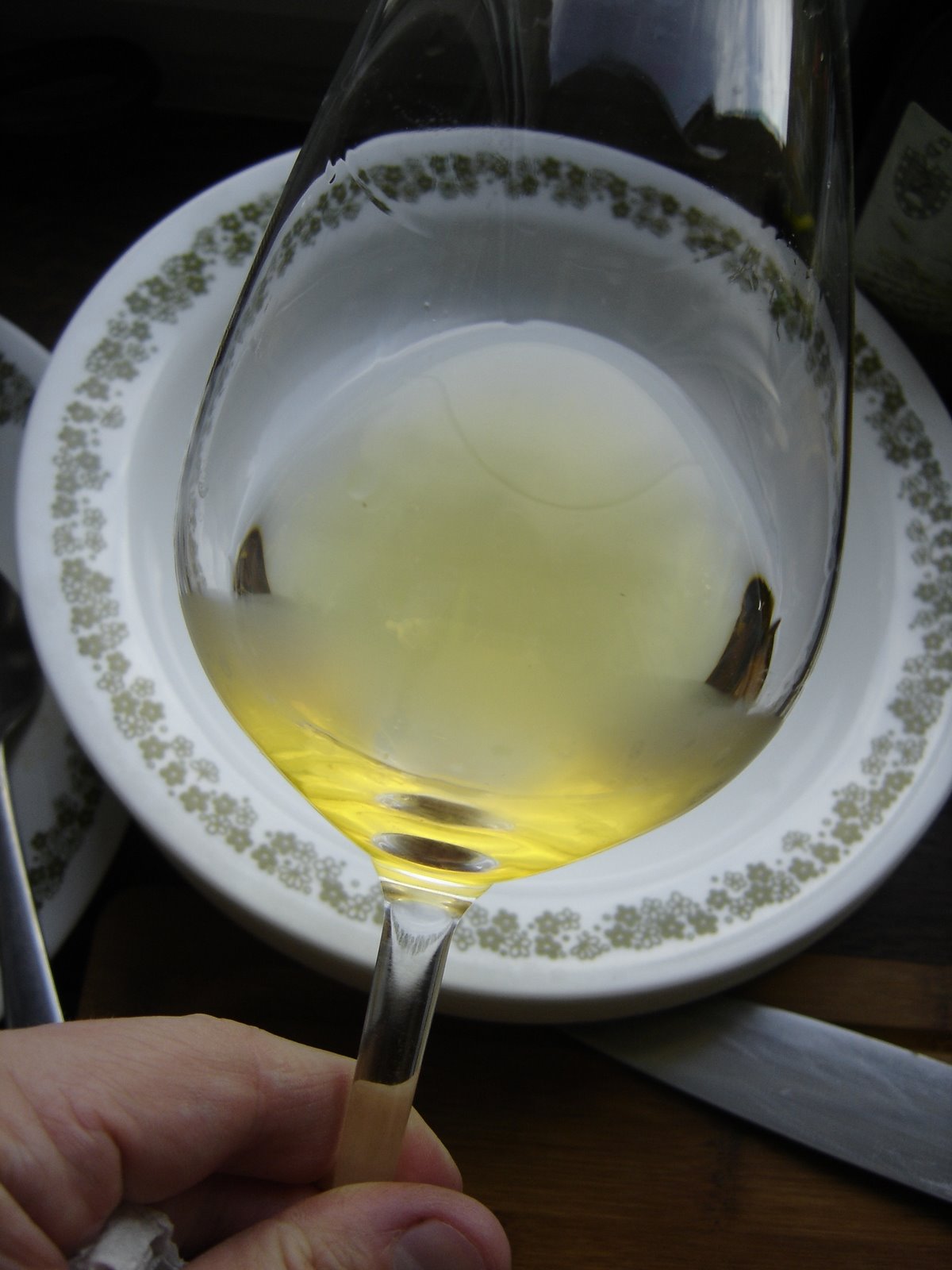
Aromatically it’s dominated by a taut, austere reductive character: not quite stinky but very herby and hayey, with a bit of richness that reminded me of an old Tokaj. On the palate it is very structured with mouth-puckering acidity effectively covering the sweetness, although the demi-sec character is quite pronounced for a wine of this alleged age. There’s also some alcohol (only 12% on the label). A big, structured wine that’s fairly immobile and could easily survive another decade. If you don’t need it to be a genuine 1961 it’s a very fine bottle for the money.
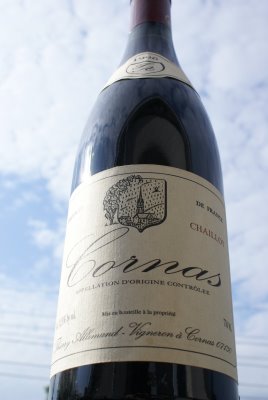
Thierry Allemand Cornas Chaillot 1996
A bin-end from Vienna’s Unger & Klein, sold at 32€ instead of the more usual 60€. Deepish colour especially at core, for the age. It starts fairly barnyardy and reduced on the nose but fortunately isn’t bretty, and with some proper airing this blows off, revealing a fairly engaging nose of crushed raspberries and good vinous depth. Some mild age on the palate but this is far from old. Palate on entry is also pleasant: vaguely varietal and peppery, but the progression is highly disappointing. Basically this just weakens and disappears on the palate. No structure whatsoever: modest acidity (though enough for freshness) and no tannins. There’s a beguiling purity about the whole thing and I can’t say it’s uninteresting but I wouldn’t pay the normal price for it. Perhaps the vintage’s lowly reputation in the northern Rhône is justified after all.
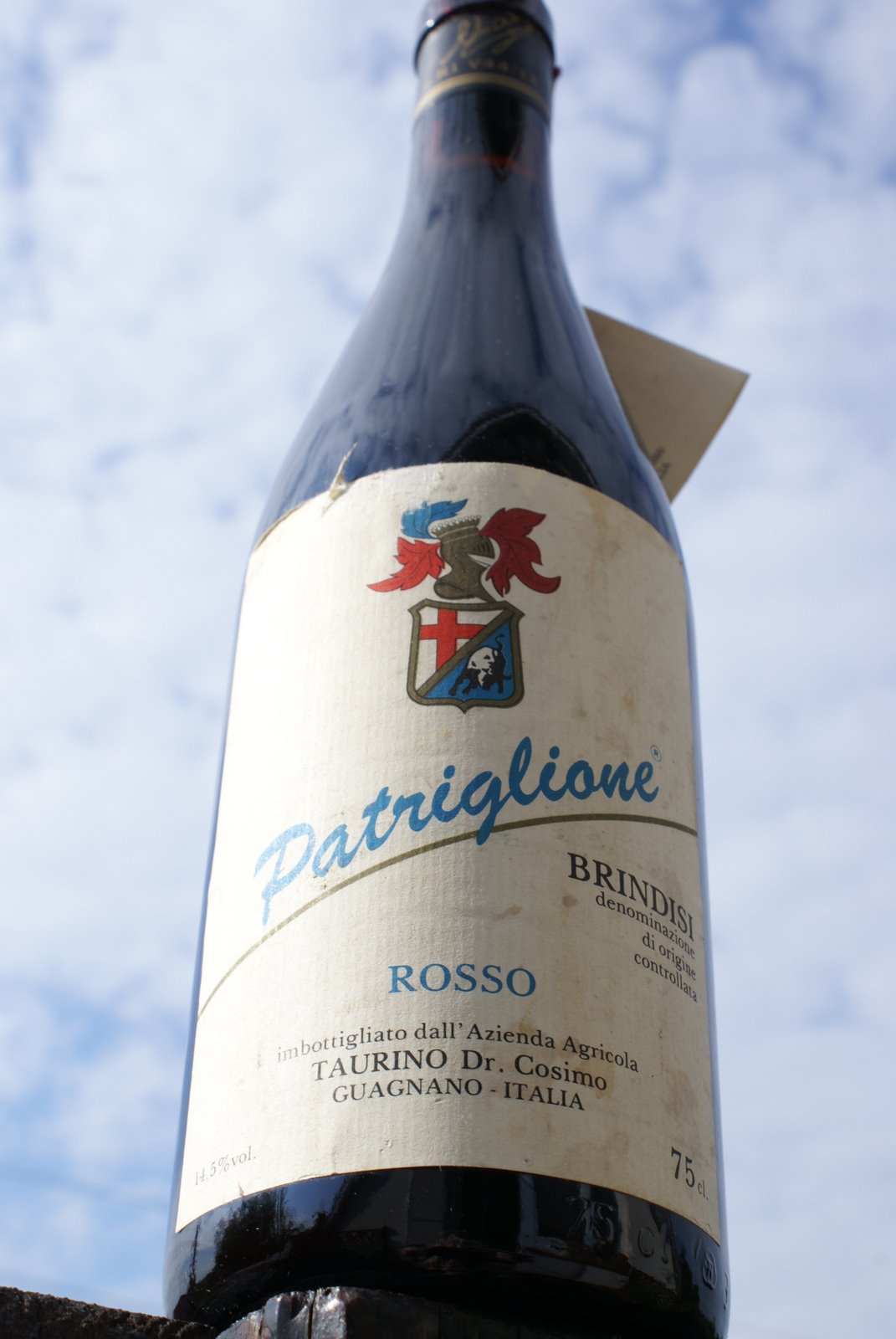
Cosimo Taurino Brindisi Riserva Patriglione 1975
This was another bin-end from a German shop, so obscure they didn’t even know how to price it. Eventually I got away with 35€. In its recent vintages it’s a southern Italian classic I very much enjoy, essentially a modified Salice Salentino (based on the Negroamaro grape) made with an amarone-like technique of drying the grapes to raisins. Fill level is quite and the cork is excellent (certainly recorked) but storage is an issue, as the wine is showing very aged. There’s a leathery, cooked-fruity, vinegary, almost maderised character that some of my diners disliked, though with a bit more experience in Apulian wines I find it fairly typical. This has aged on acidity (and some greenness) but lacks superior dimension or definition. On the other hand a Brindisi red at age 33 in this shape is surely not a bad achievement.
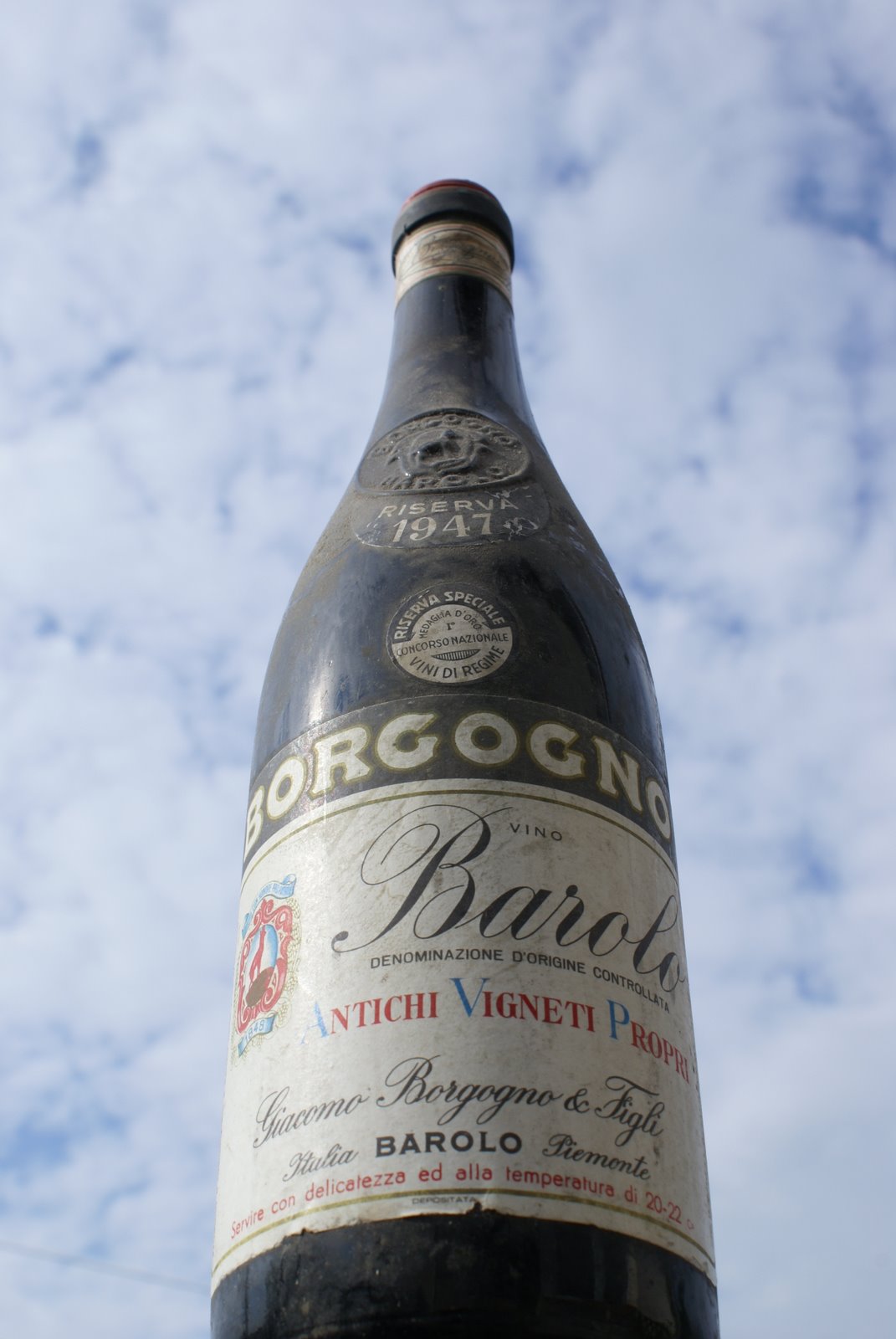
Giacomo Borgogno & Figli Barolo Riserva 1947
It’s another Barolo–Brunello bottle from Stefan Töpler. I paid 149€ for it and whenever I can justify the expense again, I’ll be sure to order some more – an outstanding bottle of wine.
I have had numerous older Barolos from the house of Borgogno, including a fantastically refined 1958, an impressive, brooding 1961 and a gentler 1967. But all came from the producer’s cellar, and were all opened and checked for faults, then refilled with the same wine, recorked and relabelled. Basically you get a Borgogno guarantee that the wine is in good shape. This makes the producer’s prices (the 1961 was 105€ a year ago) even more of a ridiculous bargain.
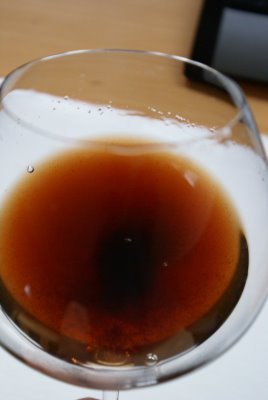 The one disappointing thing here is the nose. I usually enjoy Barolo as much for its fantastically floral, deep bouquet as for anything else, but here it’s a little lifeless, showing modest notes of raspberries, dominated by a green, briney, animal, damp-cellary, mildly over-the-hill character. But palate is very fresh and alive, with beguiling coffeed complexity. Very good length too. Perhaps not the ultimate Barolo experience (1961, with its remaining power, is more impressive) but very interesting for sure. Last sips at room temperature are really tannic (!), mineral, impressively long and so very much alive.
The one disappointing thing here is the nose. I usually enjoy Barolo as much for its fantastically floral, deep bouquet as for anything else, but here it’s a little lifeless, showing modest notes of raspberries, dominated by a green, briney, animal, damp-cellary, mildly over-the-hill character. But palate is very fresh and alive, with beguiling coffeed complexity. Very good length too. Perhaps not the ultimate Barolo experience (1961, with its remaining power, is more impressive) but very interesting for sure. Last sips at room temperature are really tannic (!), mineral, impressively long and so very much alive.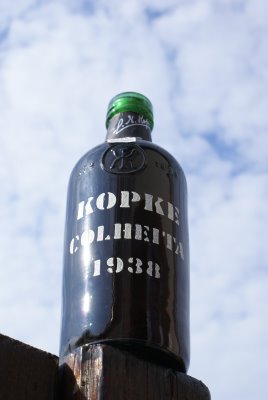 Kopke Porto Colheita 1938
Kopke Porto Colheita 1938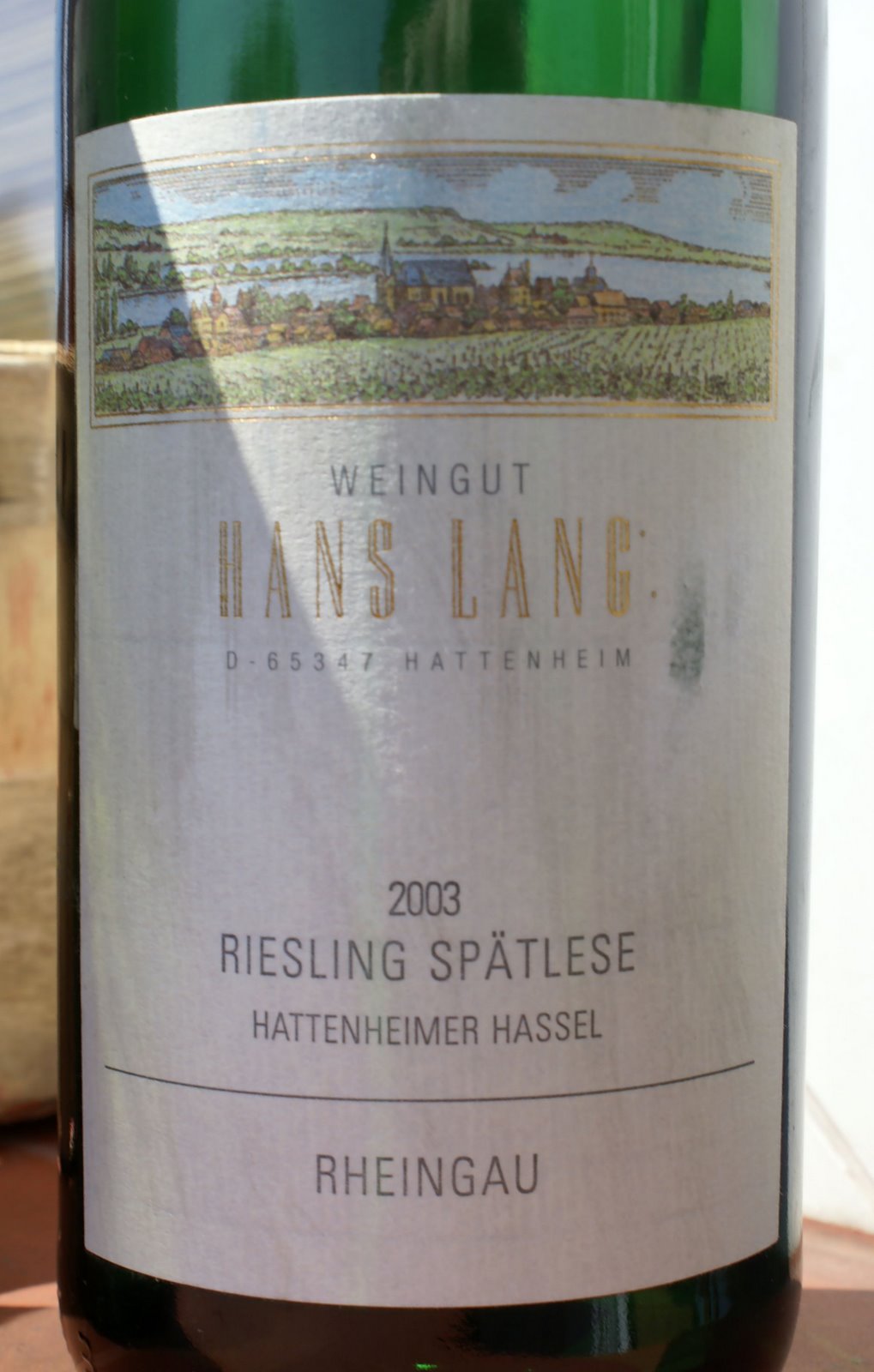 I’ve already blogged on the 2003 vintage for European white wines (here and here). Expected to have a 2003-free cellar by now, but there’s always the lone bottle lurking here and there where I least expect it. I discovered a half-dozen on the German Spätlese shelf. For German sweet wines, it was actually a fairly good vintage, beating records of ripeness throughout the country as grapes dried on the vine during that torrid summer without the usual help of botrytis.
I’ve already blogged on the 2003 vintage for European white wines (here and here). Expected to have a 2003-free cellar by now, but there’s always the lone bottle lurking here and there where I least expect it. I discovered a half-dozen on the German Spätlese shelf. For German sweet wines, it was actually a fairly good vintage, beating records of ripeness throughout the country as grapes dried on the vine during that torrid summer without the usual help of botrytis.
This Hattenheimer Hassel Riesling Spätlese 2003 from the overperforming estate of
Hans Lang is a case in point. The colour is fairly young (what vinous practice likes to describe as ‘plate gold’), and there’s really not a hint of evolution save for a minor note of brown sugar caramel. The nose is explosive, spicy, very Rieslingey, and really engaging. The palate offers the same register with an extra splash of lemony pithiness; it’s really mouth-watering. There is not a lot of concentration, in fact a bit of the wateriness I consider a hallmark of classic German Riesling. This is arguable, but I prefer a Spätlese to taste of Spätlese and not downgraded Auslese (as seems to be the ubiquitous fashion throughout Germany). This lemony acidity has preserved the wine, and remaining bottles (I have none) could easily live to see their 15th anniversaries.This was a fine performance by a wine style you’d expect to age well even in 2003. But I recently opened Lang’s 2003 Hattenheimer Wisselbrunnen Riesling Erste Lage. This grand cru level wine only has 10.5g of residual sugar (and 13.5% alc.). In ripe and overripe vintages these late-harvested dry Rieslings are usually the first to surrender to alcohol and fatness. Not here. An admirably poised and zesty 2003 with little alcohol and, again, almost no evolution. Primary fruit is a bit down, leaving a healthy amount of punchy minerality. Tastes dry and actually quite fresh. Not an immensely complex or deep wine but could continue ageing in search of these characteristics.
I was really surprised by the excellent showing of these two wines and enquired the owner Mrs. Gabriele Lang about the vintage. She says that in the central Rheingau around Hattenheim, loess soils dominate (as opposed to the more usual slate). The very rainy 2002/2003 winter helped build considerable water reserved, which the loess soils then released on the stressed vines during that tropical summer. Mrs. Lang considers 2003 one of the top vintages for this part of the region. This explains why these two bottles were so delicious, and shows the limitation of ‘vintage overviews’ that are the wine press’ workhorse.
Alberto Cordero di Montezemolo talks to Polish vintner Katarzyna Niemyjska.
But it was all forgettable compared to the Douro wines of Cristiano van Zeller of Quinta do Vale Dona Maria. I’ve never tasted an unbalanced wine here but the recent vintages have picked up even more depth and concentration (courtesy of old vineyards but also a more precise extraction than before, I guess). Even the 13€ red VZ is an utterly serious wine with plenty of substance and terroir definition; if I had an estate in the Douro I’d really be happy to have this as my grand vin. 2006 is rocking now but 2007 promises even better; it’ll be a truly memorable vintage. The flagship Quinta do Vale Dona Maria 2006 is thick as ink and very structured but already hints at superb balance of black fruits and minerals; it’s more convincing today than the 2007 which I’ve found a little atypical, more Mediterranean, low-acid, almost Grenachey than usually here. (But it was tasted under the 30C midday sun). The limited-production CV 2007 is a more seriously extracted beast of a red, but this too has gained depth and personality in the last vintage or two (not that it ever lacked either). These are ridiculously affordable wines that have never failed me, and to get them you don’t need to fight the en primeur battles with brokers from Moscow and Shanghai.
Here’s Cristiano van Zeller explaining the 2007 vintage for you:
http://www.youtube-nocookie.com/v/QJOiQ2_oB18&hl=pl&fs=1&rel=0&border=1
In this weather, it’s perhaps little wonder oak-free crisp Rieslings performed best. Theresa Breuer of the
Weingut Breuer was showing a range of bone-dry and mineral-deep Rheingau wines including the 2007 Berg Rottland that blew my mind last time; this time it was Berg Schlossberg that stole the show with a very subtle 2007 and a slowly maturing, beurre noir-flavoured 2002. Again, it’s difficult to think of a more reliable and honestly-priced estate than Breuer. Theresa speaks about the Berg Schlossberg bottling:http://www.youtube-nocookie.com/v/TNC2BTvekR8&hl=pl&fs=1&rel=0&border=1
Here’s Roman Niewodniczanski summarising his winery project in the Saar:
http://www.youtube-nocookie.com/v/UCxcgoliA1M&hl=pl&fs=1&rel=0&border=1
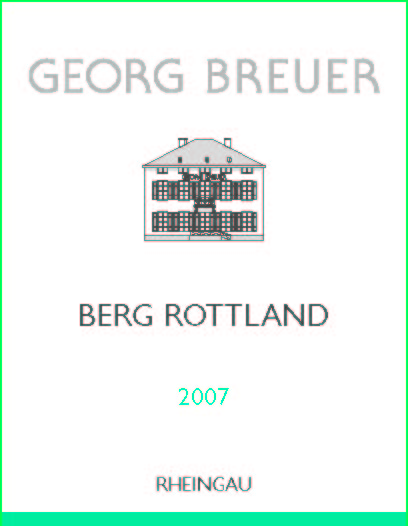
There was an exciting tutored seminar followed by a walk-around tasting. The former showcased top dry wines (chiefly belonging to the Erste Lage / Grosses Gewächs category). Even the Schloss Vollrads Erstes Gewächs 2007 which I usually don’t like (this historical estate is underperforming in my book) showed well, rich but bone-dry, with a spicy, almost brothy mineral presence and very good balance to its weight; a wine that reiterates my adulteration for the 2007 vintage. Another positive surprise was the Domdechant Werner Kirchenstück Erstes Gewächs 2006. I have a lot of sympathy for the Domdechant estate and its owner Franz Michel, one of German wine’s most engaging personalities, but I vastly prefer their sweet Kabinett and Spätlese wines to their trockens. In past vintages, I’ve found the EGs overly soft, often with a strange sunflower oil oxidative character. This 2006 was quite delicious, with surprising acidity for the vintage.
There was also an interesting range from Kesselstatt from the Mosel, including a dry Scharzhofberger Grosses Gewächs 2007, saline and citrusy with a balanced dryness but lacking a bit of depth and dimension, that was overshadowed by the Josephshöfer Erste Lage Spätlese 2006. It’s only in the Mosel that you’ll see Erste Lage wines with a degree of sweetness (they can be labelled as Kabinett, Spätlese and Auslese as in the ‘traditional’ German progression of sweet wines), and in the jungle of German wine classification this is one particularly tricky combination: how to make the grand cru status of the vineyard evident in a sweet wine context where traditionally, the mineral identity of various crus was not a priority? This wine shows how to address the issue: it’s hugely rich with a honeyed, almost oily texture from the late-harvested grapes, but showing a strong acidic backbone and an obvious minerality that will develop over the coming years and make this a really interesting bottle.
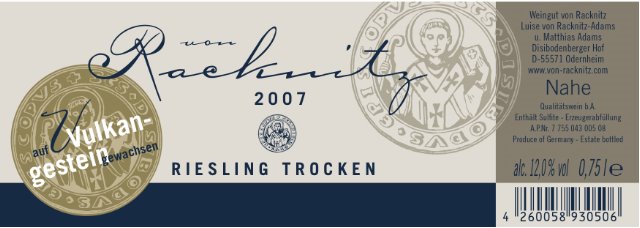
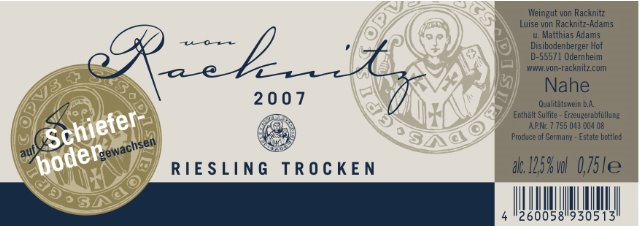 There was a producer new to me: Weingut von Racknitz from the small region of Nahe. It’s one of those estates that make Germany such a vibrant and exciting wine country. They have no fancy Erste Lage (they don’t belong to the VDP club) but – judging from the four wines I’ve tasted – very reliable quality and value for money across the range. The wines are organic and the Nahe Riesling trocken 2008 for 7.50€ is a delightfully fresh, greenish, driven rendition of the grape, while the Niederhäuser Klamm Riesling trocken 2007 is really impressive in its mineral definition, lemony poise and perfectly gauged residual sugar. For 11€ each, there’s also the interesting pair of Schieferboden 2007 – an austere and backward dry Riesling from slate, harmoniously dry with good body – and Vulkangestein 2007 – a more peppery but eventually supple and approachable wine from Nahe’s rare volcanic soils.
There was a producer new to me: Weingut von Racknitz from the small region of Nahe. It’s one of those estates that make Germany such a vibrant and exciting wine country. They have no fancy Erste Lage (they don’t belong to the VDP club) but – judging from the four wines I’ve tasted – very reliable quality and value for money across the range. The wines are organic and the Nahe Riesling trocken 2008 for 7.50€ is a delightfully fresh, greenish, driven rendition of the grape, while the Niederhäuser Klamm Riesling trocken 2007 is really impressive in its mineral definition, lemony poise and perfectly gauged residual sugar. For 11€ each, there’s also the interesting pair of Schieferboden 2007 – an austere and backward dry Riesling from slate, harmoniously dry with good body – and Vulkangestein 2007 – a more peppery but eventually supple and approachable wine from Nahe’s rare volcanic soils.
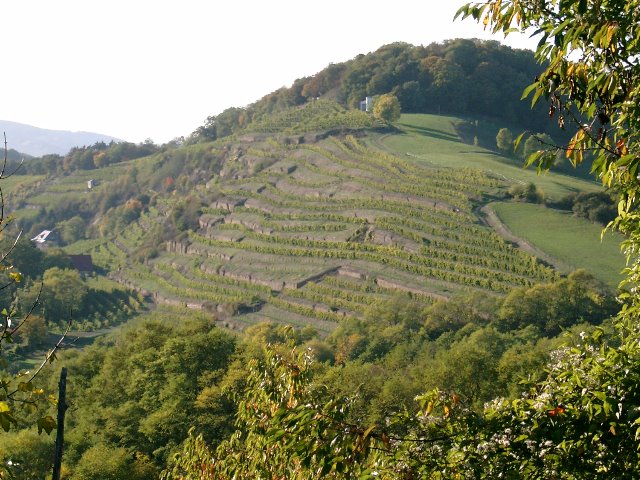
The Odernheimer Kloster Disibodenberg vineyard in the Nahe.
© Weingut von Racknitz
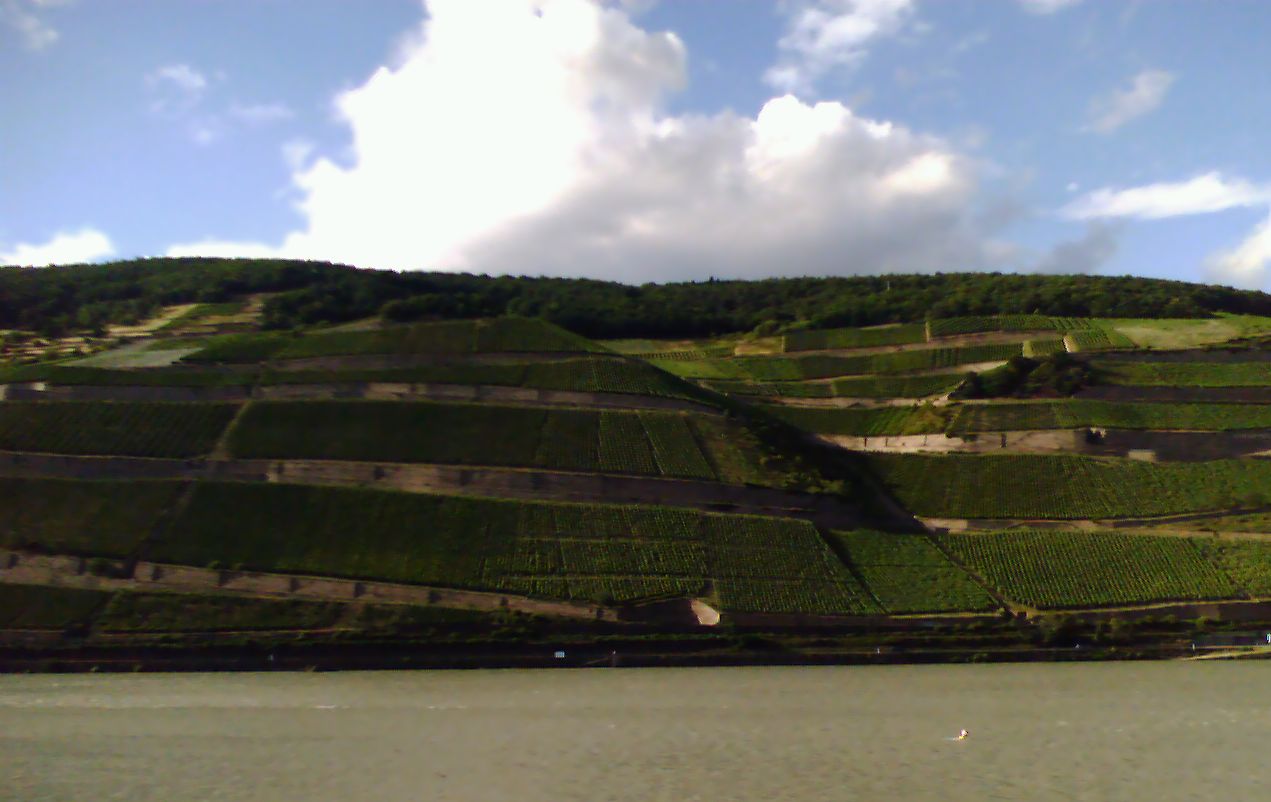 The Berg Rottland vineyard photographed from Bingen across the Rhine.
The Berg Rottland vineyard photographed from Bingen across the Rhine.With this enthusiastic consumption comes a vinous riddle: what wine do you serve with? While classic French food & wine matching considered asparagus a tricky ingredient that is best avoided, in fact it is fairly versatile. Green asparagus keeps things simple: just stick to a crisp unoaked white wine – whether Sauvignon Blanc, Riesling or something more local like Albariño or Welschriesling – and you can’t go wrong. I’ve also had lucky spells with bone-dry rosé (especially when I serve grilled green asparagus with one of my favourite sauces: romesco).
White asparagus is a little more capricious, being often served with heavy egg-based sauces such as sabayon or hollandaise (these were, in all probability, at the origin of the French reluctance towards serving wine with asparagus). A sturdier type of white wine with a bit of oak – such as Mâcon – is usually OK, as long as it keeps acidity. But a ‘perfect match’ (however controversial the concept) is more difficult to find. Trustworthy sources list a variety of bottles ranging from fino sherry through Chasselas (try to find this on way home tonight…) up to oaked white Pessac.
I have a soft spot for the classic German combination: steamed white asparagus, a light sauce, and Silvaner from
Franconia. Franken is a wine region that enjoys a unique combination of high profile among connoisseurs and total obscurity among the wider public. It produces little wine, selling it at rather high prices to a predominantly local market. It also boasts a long historical tradition (Steinwein was a very reputed wine in the 17th century), some fine terroirs (mostly shell limestone and Keuper, a kind of marl), and an excellent track record with its two leading varieties: Riesling and Silvaner. The latter – which you’ll find all around Central Europe from Alsace to Austria and Bohemia – is a local speciality, yielding dense, well-construed wines with spicy fruit, minerality and good ageing potential. With its profile of green apple, white pepper and good crispness, it is also a natural match for white asparagus.Never did it show more convincing than today with this Sulzfelder Maustal Silvaner Spätlese trocken 2005 from the
Brennfleck winery. This up-and-coming estate was relatively unknown back in 2006 when I visited them (and purchased this bottle), but now is very much on the way up. They are still not members of the prestigious VDP association, though, meaning they cannot join the latter’s vineyard classification. Why do I say this? Because this Maustal Silvaner is effectively a Grosses Gewächs, a grand cru of Franconia. A brilliant wine with depth and character.The wine itself has changed somewhat since my two tastings in May 2006 and August 2007, and today is showing better than expected. No sign of ageing. This has lost its Franken exotic fruit exuberance of youth (which can sometimes be funky when top cru wines smell of canned papaya), and we are left with a much clearer limestone minerality. Not a complex wine but really deep and pure, this is very enticing, and more refined than many a Silvaner. Palate is quite rich and broad but retains respectable acidity and cut; finishes greener, almost lettucey. The only criticism is about the slightly high alcohol (13.5% alc.), but it is nothing outrageous. In a word, don’t serve too warm, but otherwise this is a stellar wine for a lovely price – Brennfleck are offering the current vintage of this for a ridiculous 12€.
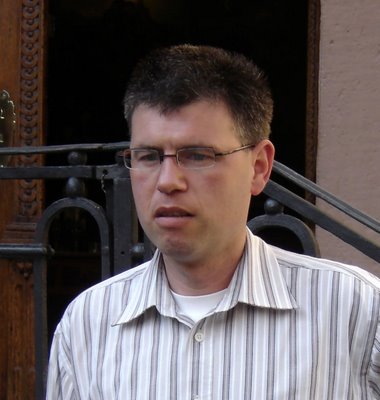
Hugo Brennfleck: an over-performer from Franconia.
Cellar damage
A family gathering resulted in what wine lovers (half-)jokingly refer to as ‘cellar damage’. It was on occasion to look at some wines I was curious to try, alongside some I just genuinely like. Selbach-Oster Zeltinger Schlossberg
Riesling Spätlese trocken* 2007
I stocked up heavily on German 2007s in general (my favourite vintage of the last decade, with fantastic poise) and Selbach-Oster in particular, whose unadulterated style (and ridiculously affordable prices) I cherish. Having been in no rush to empty the bin, I am slowly discovering the various cuvées here. This wine (AP no. #18-08, 12.5% alc.) is described by Johannes Selbach as fruity and elegant. No doubt about it, but somewhat surprisingly it doesn’t taste trocken at all. With a good deep colour and a powerful ripe peachy nose with subsidiary notes of honey, flowers, and jammy stone fruits, it is really suggestive of a sweet Spätlese. However, there is also lots of mineral tension, making it assertive and interesting. Likewise on palate this is much into halbtrocken category, although also has a fusel whisky-like presence of alcohol (not too high though) of real trocken. Not unenjoyable, there’s plenty of fruit and more substance than often for Selbach-Oster (the concentration is noteworthy for the Middle Mosel), but I just find this mislabelled as it really tastes like a Spätlese feinherb. On its own merits, recommended for sure. Királyudvar Tokaji Furmint száraz [dry] 2005
This wine is from a prime estate in the Hungarian region of Tokaj, where there’s a dynamic development of the dry wine offerings at the moment. Made primarily from Furmint, a powerful, high-acid, ageworthy grape variety, these wines can range from the light and zesty to the extractive and botrytis-spiced. Here we have an intermediate style with a fair bit of weight (a moderate 13% in the context of Furmint) but good drinkability. A rich nose with some notes of botrytis, also mildly oxidative (or just ageing), this is showing a bit of residual sugar and less acidic drive than I expected (especially for the crisp 2005 vintage). But there is also that basaltic-dusty expression of the volcanic terroir of Tokaj that is so recognisable. Palate is semi-dry, with some slightly off oak notes, not very long finish in this essentially simple wine. (To its credit it’s also inexpensive, and positioned clearly below Királyudvar’s cru Furmint bottlings such as Lapis, Henye or Úrágya). Better with airing when the dusty oak notes integrate. At its peak now, drink by 2010.Clos Lapeyre Jurançon Sec 1998
The south-western French region of Jurançon shares a single characteristic with Tokaj: mouth-puckering acidity. No wonder both regions have historically been known for sweet wines, where high levels of sugar contribute to balancing that aggressive citric tang on the palate. Making a good dry Jurançon is therefore as much of a challenge as a dry Tokaj. This wine has had ten years to digest its acidity (it’s spent them chiefly in the cellars of the excellent Wiesbaden Weincontor which I’ve already mentioned here). The bouquet is surely very mature, with burnt milk, honey, butterscotch, and a tertiary damp-cellary character the Germans aptly term Firne. There is also some underlying minerality. Then on the palate (perhaps expectedly so) there a streak of tart acidity that has preserved the wine in an almost unchanged, green-grapey stage. (The 12.5% alcohol also tells you these grapes weren’t picked overripe). All in all this is well-preserved, fun and interesting to drink wine, but not a lot of dimension and showing the limitation of many dry Jurançons, sadly. Not all though – try something like the Sève d’Automne from Domaine Cauhapé for quite a different, untart take on the appellation.Le Vieux Donjon Châteauneuf-du-Pape 2000
This small estate is among the most traditional in Châteauneuf, though unlike other exponents of the style such as Clos des Papes it rarely makes it to the headlines. A lowish-alcohol (only 13.5% here!) Grenache-dominated blend aged exclusively in large oak foudres with only one red cuvée being produced sum up this producer’s approach. This is another Weincontor purchase that I expected to be ready to drink. It roughly is. This wine is really showing Châteauneuf at both its most typical and most elegant. There’s not a hint of late-harvest jamminess, and remarkable freshness for the appellation (though it’s obviously a low-acid red). Lots of fruits rouges finesse on the nose, this has not so much substance or power but a haunting depth and airiness. Palate has that quintessential Grenache note of Agen prunes. The low alcohol (in context) is almost 50% of the success here. No great depth or poise, rather shows a conservative well-gauged and well-aged character (and perhaps all the more precious for that). I’ve really enjoyed it, also for its deliberate reluctance to beat any records of concentration or richness. I’ll surely buy some more next time I’m in Wiesbaden.
What wines did Beethoven enjoy?